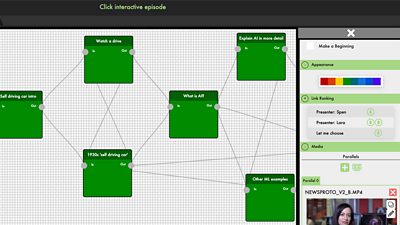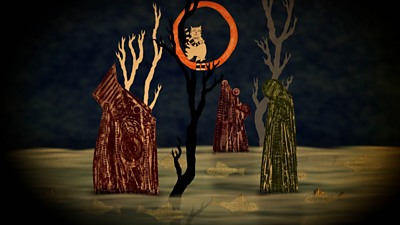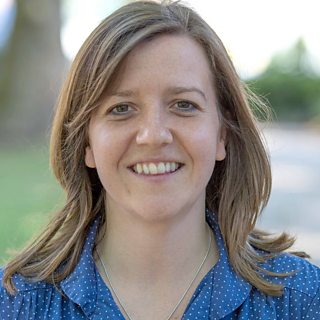What can happen in a year? So much. Besides the obvious changes to our lives, the first year of Βι¶ΉΤΌΕΔ MakerBox has been quite the learning experience.
As a reminder, MakerBox connects curious minds through growing a community of practice. It is a place that shares knowledge, expertise and technology to production teams and makers to create next-generation digital storytelling.

Let's start with the numbers - since launch we've received over 500 requests to use a tool on MakerBox globally, we have over 200 community members and 120 community conversation engagements. Two new tools have been made available with another two still to come.
We launched with several tools, a mixture of homegrown Βι¶ΉΤΌΕΔ ones and others licensed from third parties. Some tools were available more widely than others due to licensing terms which was an initial barrier to some of our users. For example, we had makers in waiting ready to use StoryFormer who were excited to experiment with the tool but were disappointed that they wouldn't be able to share their explorations once built. This understandably put some people off.
However, this was incredibly useful in prioritising our roadmap - it meant that we knew users wanted to experiment with object-based media tools but wanted to share what they'd made, even if it was a rapid prototype. Previously the only route to publishing these experiences was via Βι¶ΉΤΌΕΔ Taster, which is a great opportunity where possible but isn't always the best route.
Taster is a Βι¶ΉΤΌΕΔ platform, involves various Βι¶ΉΤΌΕΔ editorial and security checks which can perhaps be a little excessive for external companies creating quick experiments for rapid feedback. We've since developed StoryPlayer, a companion app for StoryFormer which allows makers to share their creations within their own networks, growing the community of practice.
Part of this work was spurred on by user feedback and the nature of the requests coming through to use the tools. We hadn't anticipated that quite so many university professors would see StoryFormer as a way to change student storytelling, production or even reporting.
It wasn't just professors teaching new production formats that wanted to access it; the courses ranged from new storytelling techniques to digital archive methodology. This meant we could test and develop StoryFormer further with different creative applications, and at scale. However, since March, university professors have undoubtedly had other things on their mind. We hope to pick up this conversation again in the coming months.

We also launched with a third-party tool, Charisma.ai, which was available to Βι¶ΉΤΌΕΔ staff and selected Βι¶ΉΤΌΕΔ partners. These parters were part of initiatives that we led or were involved in, like CultureUK, and the availability of the tools depended on the terms of our license. Although this meant disappointment for some, it meant that we were able to work with teams like the Βι¶ΉΤΌΕΔ Writersroom to make experiences such as The Act and Catfish, while sharing what we learned from these experiences with the rest of the community.
In July, we made the Audio Orchestrator tool available as a downloadable application for Mac users globally. Audio Orchestrator allows makers to create immersive and interactive sound experiences that play out to everyday connected devices such as smartphones, tablets and laptops. We saw an explosion of requests within the first week of publishing Audio Orchestrator with a significant demand coming from the audio community. This interconnection of communities was precisely what we'd hoped for when starting a year ago - the sharing of expertise from neighbouring networks and the potential for the cross-pollination of skills and collaborations. We're starting to see this in and hope to see this continue across other networks and technologies.
Early on in the summer, we had the opportunity to work with Βι¶ΉΤΌΕΔ Arts on the Culture in Quarantine initiative to explore whether some of their audio and video commissions could be reimagined with an interactive lens. were keen to see how Audio Orchestrator could help them do this with their adaptation of The Decameron Nights for Radio 3. We proved that taking small steps on top of known production workflows to try something new can help drive the adoption of new storytelling formats. The result is quite powerful for the audience too - give it a try on Βι¶ΉΤΌΕΔ Taster.

MakerBox does not sit alone. It is entwined with our other products: - which aims to give makers practical advice and expertise, and Taster - a places for audiences to take part in trials and test our prototypes. Over the past year, we've taken steps to bring these products closer together and grow our community of practice, but there's still a lot to do, and a lot to focus on over the next year.
- Recent Connected Studio activity:
- Βι¶ΉΤΌΕΔ R&D - Culture UK
We're currently working on some new homepage features for MakerBox that will reduce the barriers to engagement - these will incorporate a fresh look at aligning production terminology with our own, so we're all speaking the same language. We'll also be drawing back the curtain of Βι¶ΉΤΌΕΔ Research & Development to make it easier to share knowledge. This can make a difference to the practicalities of creating an experience; we will be trying to give the maker everything they need to experiment, not just those that have production tools available. Imagine creating an experience using spatial sound and having access to experts and those that created industry standards to ask them questions about your project.
Like most others, the MakerBox team have had to adapt over the last six months, and collaborative cloud-based tools have been vital for asynchronous work. We introduced new ways of working and created new processes that have meant we’re able to make sure that team health is a priority and that we can balance the benefits and efficiencies of being flexible and remote-first.
We have also been able to test a variety of methods to carry out online workshops and hacks since June to find new ways to encourage learning without fatigue - you'll hear more on that from us soon in a MakerBox case study and blogpost.
We've got so much ambition for the year ahead, but for now, we'll take a moment and celebrate what we've achieved in this first one. Take care.
- -
- Βι¶ΉΤΌΕΔ Connected Studio - MakerBox
- Βι¶ΉΤΌΕΔ Connected Studio
- Βι¶ΉΤΌΕΔ R&D - Where Next For Interactive Stories?
- Βι¶ΉΤΌΕΔ R&D - Storytelling of the Future
- Βι¶ΉΤΌΕΔ R&D - StoryFormer: Building the Next Generation of Storytelling
- Βι¶ΉΤΌΕΔ R&D - StoryKit: An Object-Based Media Toolkit
- Βι¶ΉΤΌΕΔ Taster - Try Click's 1000th Interactive Episode
- Βι¶ΉΤΌΕΔ News - Click 1,000: How the pick-your-own-path episode was made
- Βι¶ΉΤΌΕΔ Taster - Watch Instagramification
-

Future Experience Technologies section
This project is part of the Future Experience Technologies section
